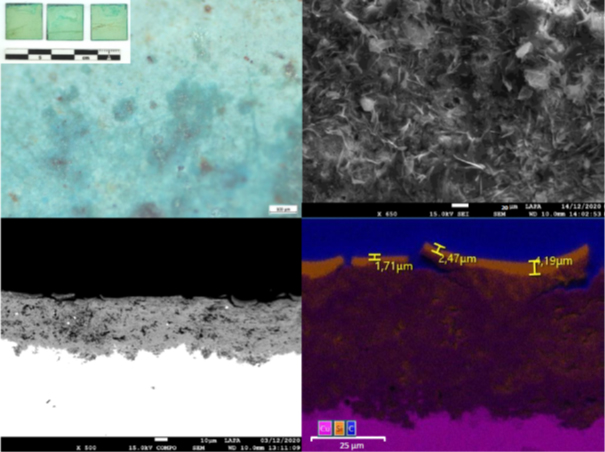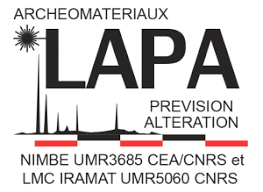Presentation
The “heritage protection” theme studied at NIMBE/LAPA aims to produce innovative protective treatments for copper-based materials, which are components of cultural objects. The aim is to achieve effective long-term protective effects.
The objective is to understand physico-chemical interaction mechanisms between the corrosion layers on heritage materials and the non-toxic organic treatments designed to protect them. In a heritage context, and as opposed to industrial applications, it is essential to preserve the corrosion layers and their aesthetic characteristics. This requires the development of specific methodologies to understand the physico-chemical inhibition processes involved. Several grants have been obtained to achieve these objectives (doctoral and post-doctoral contracts from the Fondation des Sciences du Patrimoine (FSP), ANR Labcom and the ‘France relance’ project, as well as the CEA PhD fund). This area “LAPA Heritage protection research” focuses on carboxylate-doped sol-gel coatings, which are effective in allowing corrosion-inhibiting carboxylates to penetrate the micro- and nanometric porosities of the targeted layers. The project is being pursued along two axis:
- The first aims to gain a better understanding of the physico-chemical mechanisms involved at the treatment/corrosion interface, and how they evolve after one year’s exposure outdoors.
- The second aims to develop simple and effective spray application techniques that can be applied insitu to very large surfaces of heritage materials.
A multi-technique and multi-scalar (macro-nano) analytical strategy for the samples treated and aged for one year, as well as a protocol for determining the evolution of the hydrophobicity of the layer using deuterium (heavy water or D2O) as an isotopic tracer, will enable these objectives to be met.
This research is also part of the multidisciplinary LETRIP consortium, which includes specialized physical chemistry laboratories specialising in heritage (from laboratory analyses at micro and nano scales to on-site analyses, Espadon platform) as well as those involved in in situ restoration to ensure the transfer of technology and technical knowledge from the laboratory to the restoration site.
Past and current partners:
- NIMBE / LAPA, CEA/CNRS – University of Paris Saclay
- LPMS, University Cergy – Pontoise
- ILV, CNRS/University Versailles Saint Quentin
- A-corros, Archeomed, Arles
- Monaris, Sorbonne University/CNRS





